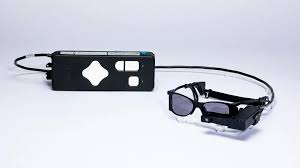The groundbreaking eye implant that helps blind patients read again
Patients, who must learn to interpret images for months, also have to work hard with this new medical technology. The new method involves placing a tiny photovoltaic microchip, just 2 mm square and as thin as a human hair, beneath the retina. Patients then wear glasses with an integrated video camera that emits an infrared beam of images to the implant located at the back of the eye. This implant transmits them to a handheld processor for enhancement and clarification. The images are then sent back to the patient's brain via the optic nerve and the implant, enabling them to regain some visual capacity. A surgeon who implanted microchips in five patients at Moorfields Eye Hospital in London says the results of the international trial are "incredible." Sheila Irvine, 70, who is registered as blind, described being able to read and solve crossword puzzles again as "out of this world." The technology offers hope to individuals with geographic atrophy (GA), an advanced form of dry age-related macular degeneration (AMD), which is estimated to affect around 350,000 people in the UK. Vision becomes blurred or distorted when a small section of the retina at the back of the eye deteriorates over time. Often, the ability to distinguish colors and subtle details is lost.
11/15/20251 min read


Contenido de mi publicación
